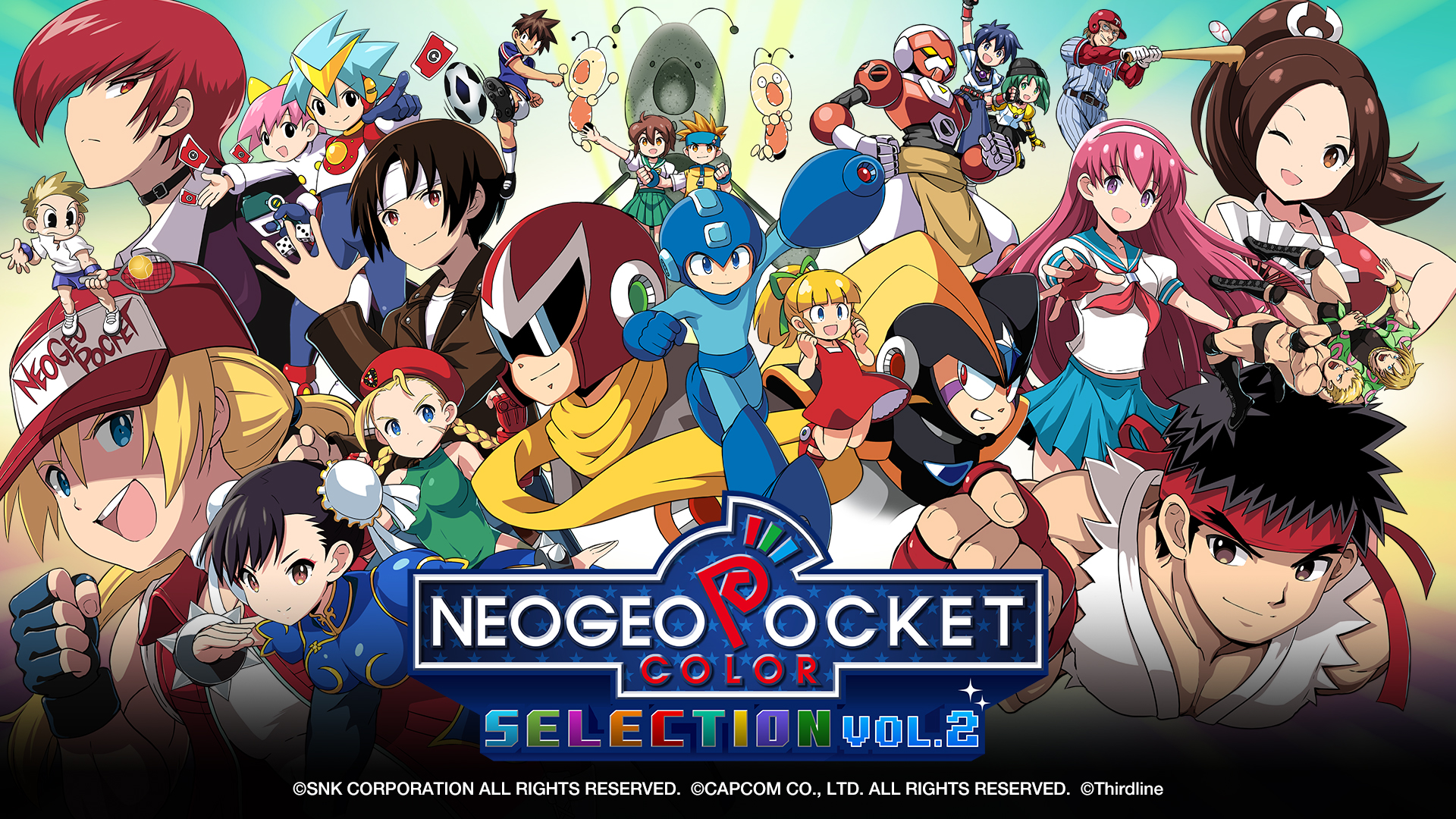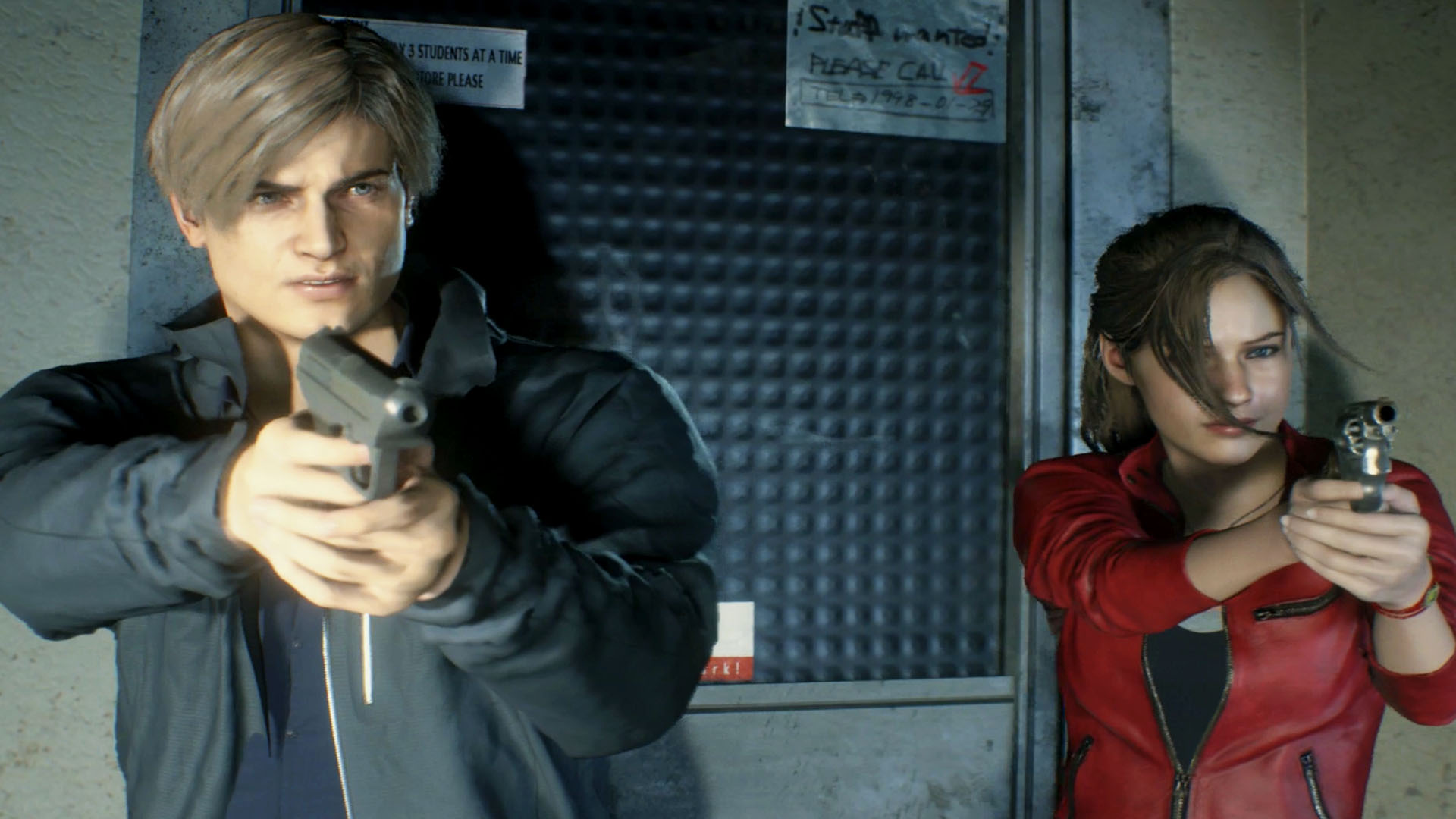Ghost Trick: Phantom Detective Review (PS4) – RIP and Scare
Capcom, despite their status as a worldwide publisher with many a top-selling franchise under their belt, does on occasion put out something obscure. God Hand, Killer7, Rival Schools… there’s been a lot over the years. One that some might have missed, being on the Nintendo DS, was Ghost Trick: Phantom Detective.
A logical game, based on object manipulation, time-rewinding mechanics and the connection to other souls, Ghost Trick was a weird gamble for Capcom. But, given the popularity of games like Phoenix Wright and Professor Layton, it fit right in on the handheld. But, due to a limited run, it was also obscenely hard to get for a decent price.
Now, thanks to the magic of porting and fan demand, players won’t have to pay out of the nose to give this kooky, spooky (ish) title a go. Is it worth dying for, or should we save our souls for something better? Let’s detect and see what’s what.
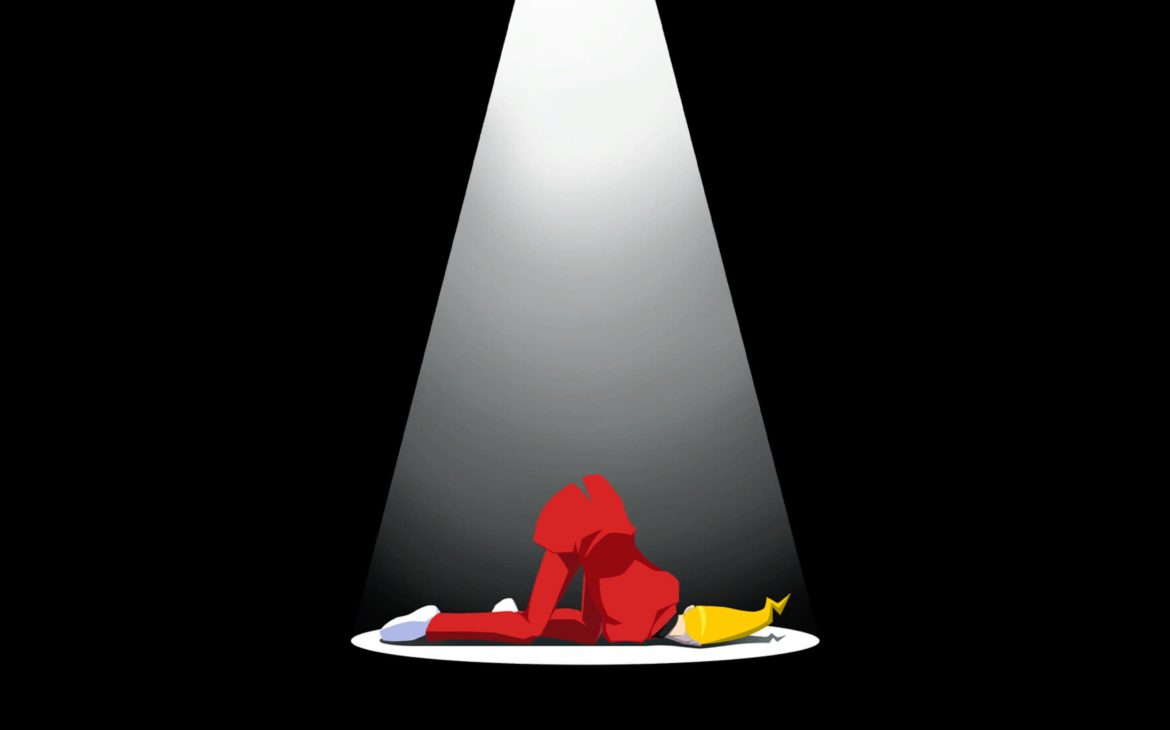
Who Whispers To My Ghost?
Usually this would be the part in the review where I would set the scene, the story, and all that tone. Whilst I am going to do that, it’s going to be as spoiler-free as possible. You may cry afoul as the game’s been out for a dozen years, or perhaps could go read a synopsis already, but I’d like to keep the mystery and intrigue around the game.
What isn’t a spoiler is how our initially unnamed protagonist is dead from the start. Yes, despite that rather snappy suit, we start the game dead and in an undignified manner of death. However, rather than the setback it normally is, death allows us (through this poor fellow’s ghostly abilities) to detect. See, Ghost Detective is rather literal.
What this means is that through object manipulation, deduction and lateral thinking, and in my case some swearing, we can prevent further bad things from happening. It starts off with saving another unnamed [presumably] innocent person under attack, before events unfold into something of a much grander scheme.
Guided by a talking lamp (no, really), our eventually-named hero Sissel has one night to work out why he died, who he was and what it all means. Along the way, there are nearsighted and forward-thinking hitmen, yappy dogs and a villain with a moustache to put Dr. Robotnik to shame.
But how do we do this? We’re non-corporeal, right? Well, here’s the… uh, trick.
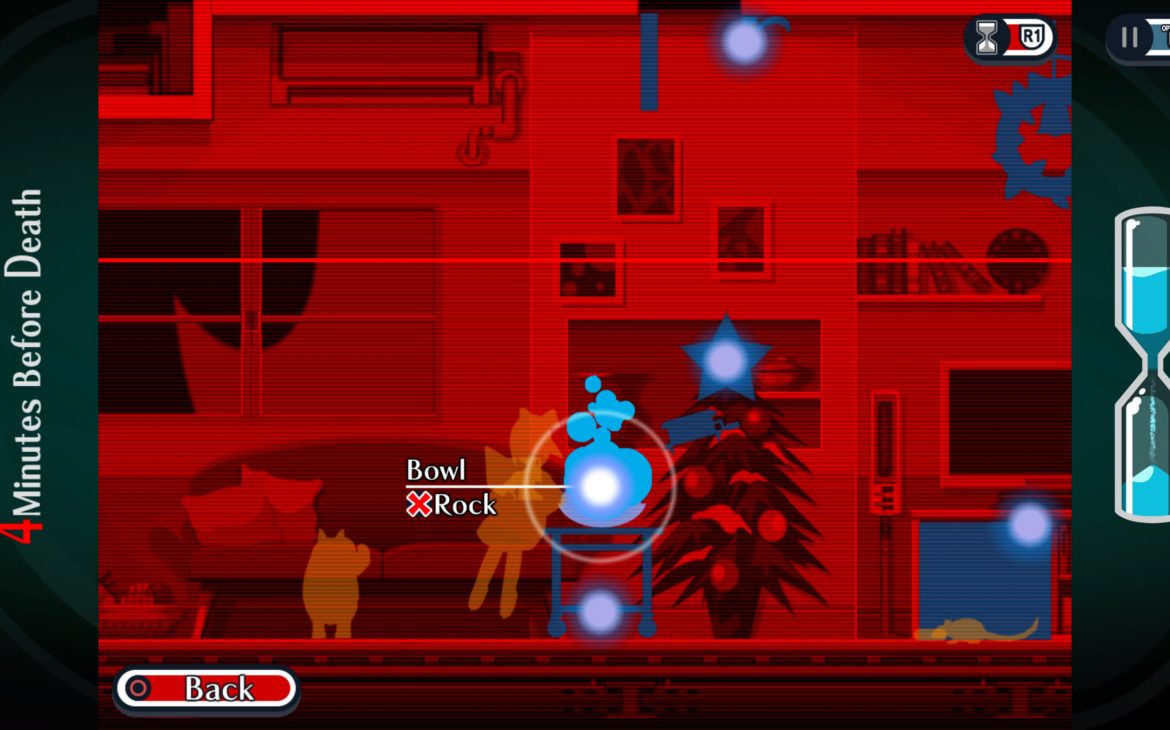
Point And Trick
So, how does being a ghost manifest into a puzzler? Is it similar to Murdered: Soul Suspect’s ghostly wanderings, or Ghosthunter’s astral projection moments as… well, Astral. Surprisingly enough, it’s neither. If I were to say, “This is evidently a Nintendo DS game” that might give you some idea.
What this means, to those not familiar with how a DS touchscreen works, is sliding the recently de-Sissel’s (go with it) soul from object to object. Now, there’s no touchscreen integration on the PS4 version, so it just means flicking the left thumbstick towards an object. This is done in Ghost Time, something that can be changed to on the fly.
In “real time”, or the land of the living, Sissel can manipulate a large percentage of the items he possesses, or “tricks”, if you will. Ceiling fans, fruit bowls, bicycles… numerous objects with context-sensitive actions behind them.
Yes, large parts of the gameplay in Ghost Trick is logic and deduction-based puzzling. At the start, for instance, our as-yet-unnamed damsel in mild distress is being held hostage by a shortsighted hitman. We know he’s not bluffing, he’s already shot Sissel. But fret not, we’re in a junkyard, and there’s a precariously placed wrecking ball above the assassin.
So, through a daisy-chain of events, we steer soul-Sissel through both Ghost and real time, setting up Rube Goldberg-like sequences to prevent someone else dying. Shame she ends up getting shot… or does she?
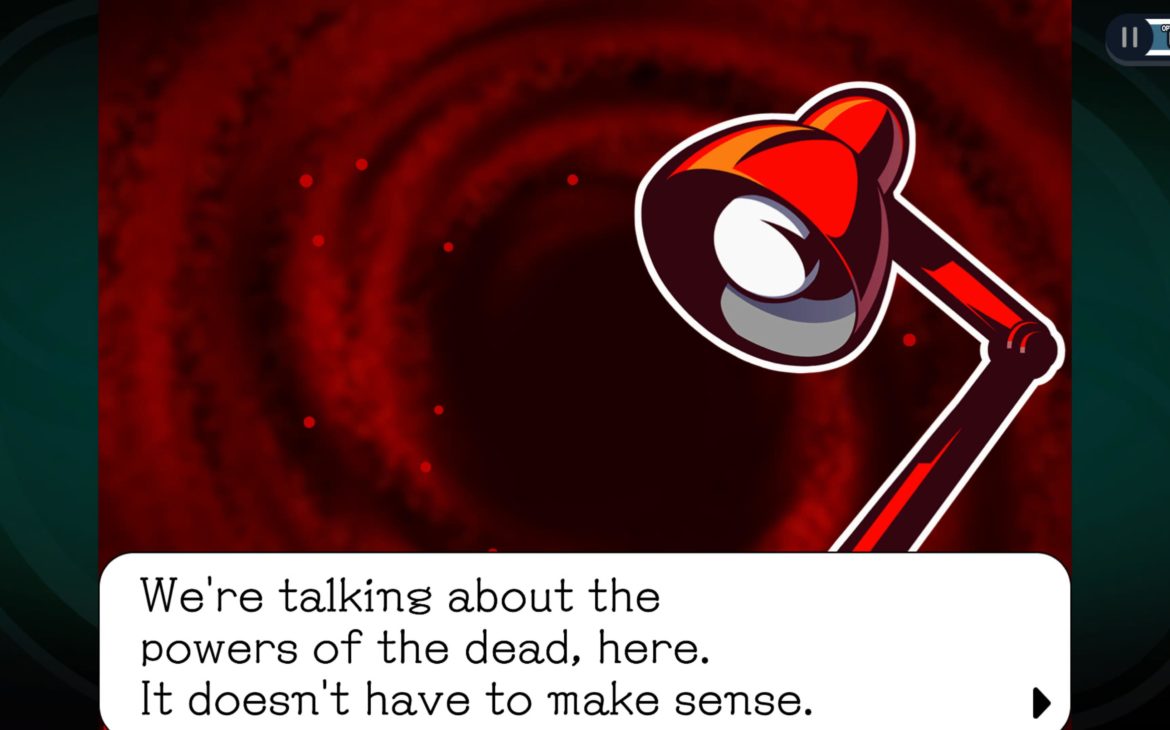
Once More With Spirit
The other, more far-out ghost power that can utilised is time-travel. Not to anywhere, or any time, but specifically the last four minutes of a dead person/animal. That’s not me being flippant, you do actually travel back four minutes of a dog’s life-before-death in an earlier chapter. Of course, you might be wondering why we’d want to do this.
Rather than just being a chance to watch someone die repeatedly, players can in fact defy Terminator 2’s logic and change fate. Well, specifically the one of the inhabited body, but it’s enough to change the outcome of the plot. Take the red haired lady at the start: she gets shot not long after Sissel does. However, by going back and racing against time, players can make sure that doesn’t happen.
Is it a bit of a fiddly plot device that defies conventional time-travel/paradox-and-causality rules? Yes, but it’s also quite a nifty gimmick that I personally haven’t seen used since… ooh, Shadow of Memories on the PS2. It does add some tension with the ticking clock of four minutes, but don’t sweat it too much: time pauses in the ghost world.
So, combine that with object manipulation, it gives us the overall feel of how Ghost Trick plays. But whilst it may sound like any standard DS shovelware on paper, it’s the visuals and writing that make it stand out.
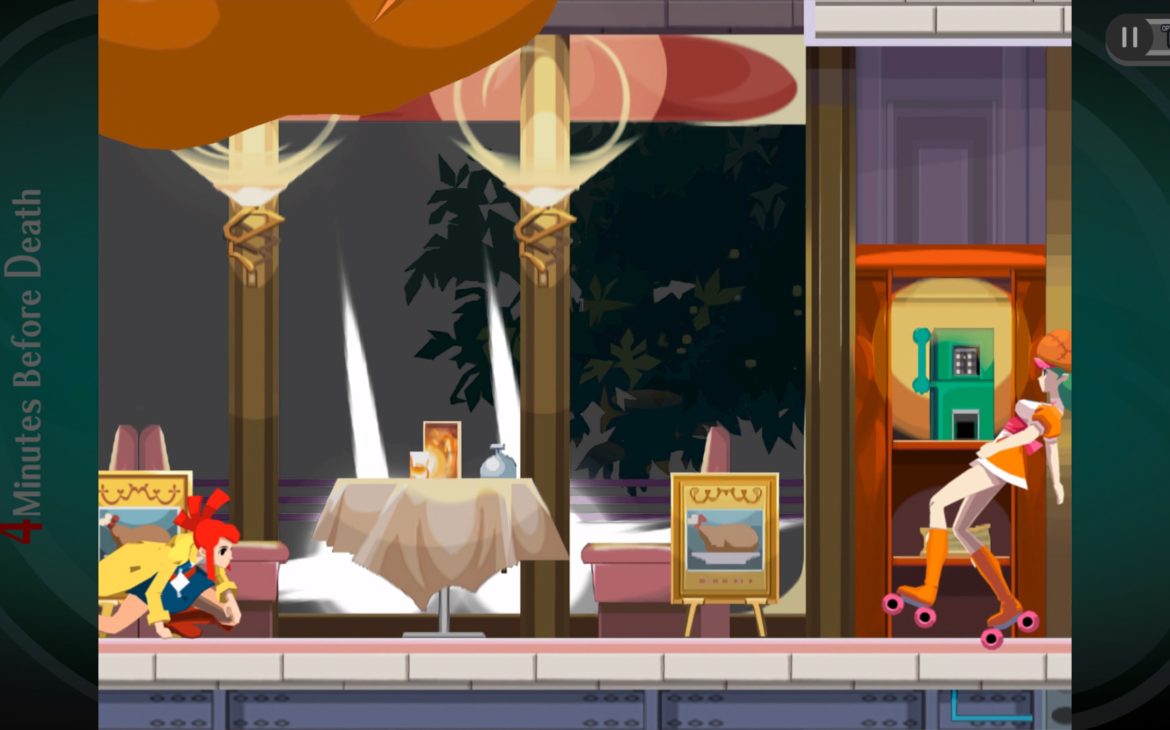
Visual Trickery
As I mentioned earlier, it is very clear that Ghost Trick started as a DS game. Aside from the stylus-based mechanics, it’s got that handheld charm in the visual department too. It’s not striving to push any graphical limits, but it makes up for it with style instead.
I’m no expert when it comes to art styles. So instead, I’ll rely on buzzwords like “cartoon-y” and “well animated” instead. But that’s not meant as a detraction, it’s actually one of Ghost Trick’s strongest points. That it’s very animated, in both the art and character movements, actually makes it more fun to play.
Rather than be a static, two dimensional kind of game, seeing characters and objects move in somewhat 3D movements across stages actually brings it to life (pun intended). Same with the scores too. I haven’t played the original, but I have seen its earlier graphics and thankfully, porting has worked in its favour. There’s always that fear when one plays something old that it’ll stretch and distort badly on newer TV’s. Fortunately, Capcom have taken this into consideration and made the appropriate adjustments.
There’s this funky, jazz-like tone to it that reminds me heavily of Cowboy Bebop and the like. Or, to use another DS title, Trauma Center: all smooth grooves one minute, the next some upbeat tempo as players race against the clock. That’s the new arrangements, at least. Again, if you’re feeling retro inspired, there’s an option to play with the original score too.
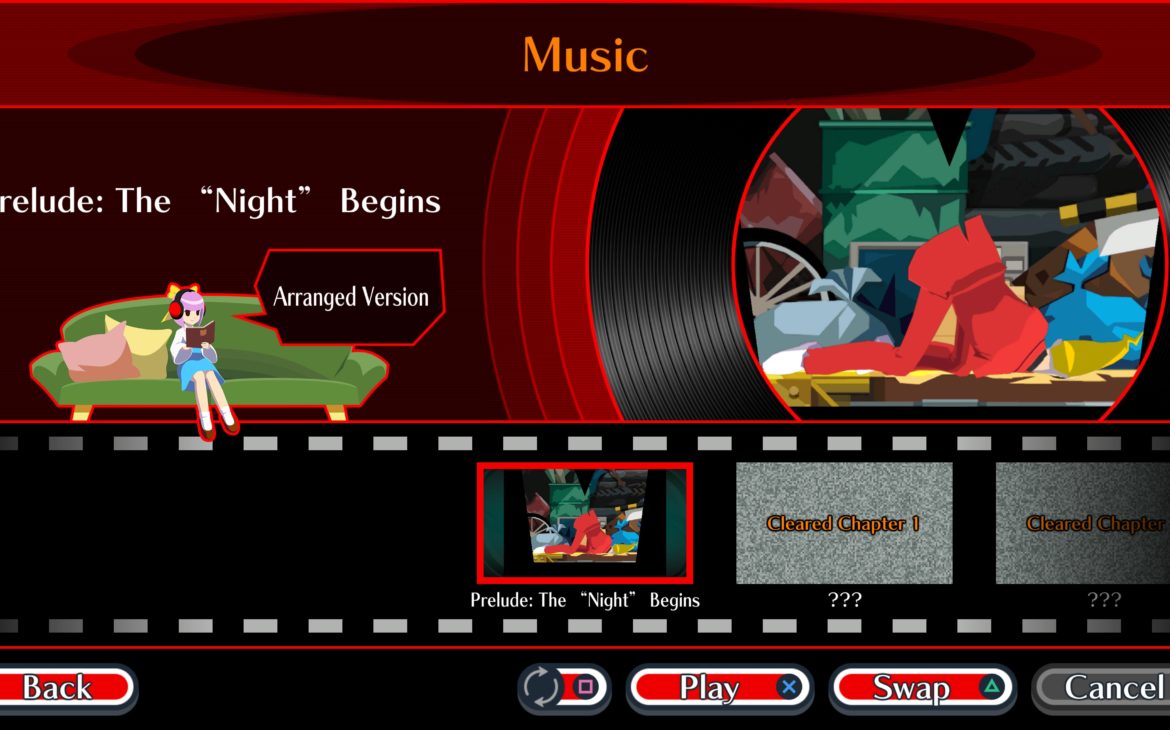
Sleight Of Hand
So far, for me, Ghost Trick is ticking all of the right boxes. I don’t tend to go for puzzlers outside of reviewing, but the esteem around this once-niche title caught my interest. But is it a gateway to this genre, just as Hades was for roguelikes? Sadly, no.
The problem with some of Capcom’s more irregular titles is that they’re made in a specific way. Rather than streamlined into a formulaic process, there seems to be no regulation on how a game flows or its pacing, for example. Take Okami, let’s say: remember how torturous the dialogue was that you couldn’t skip?
Well, Ghost Trick has that at times too. Walls of text that players will just want to speed up, or skip through entirely if they’ve already seen it. There’s an option to speed through already-read text, but not skip it entirely.
Is it a weird complaint? I suppose it’s a personal one, as some people enjoy walls of text. I’m an avid reader, don’t get me wrong, but failing a puzzle to have to scroll through the pithy dialogue again loses the humour after a fashion.
But as I say, that’s purely a subjective grumble.
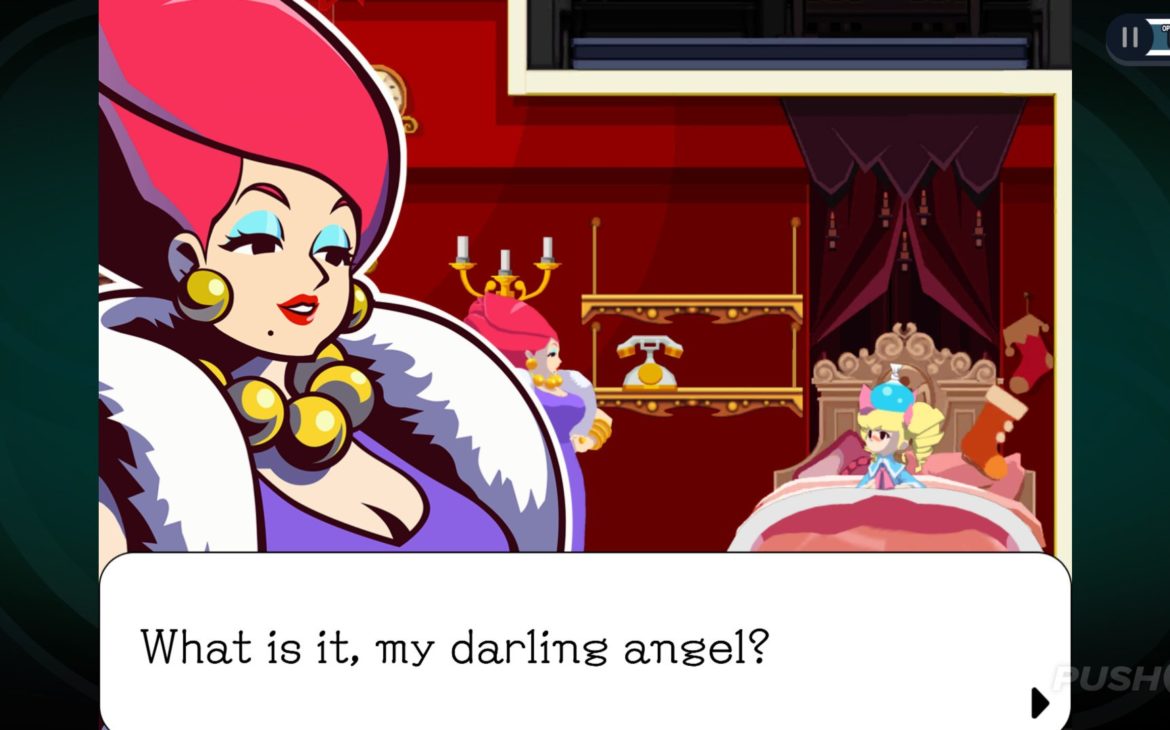
Dead And Solving It
To conclude, I actually really enjoyed Ghost Trick. I have, however, read the synopsis a few years ago so it’s all completely alien to me. I have been careful with what I give away on here, because I do want to encourage people to play it. I’m not going to do the whole “you’ll never see X bit coming” or “A late game spoiler will surprise you” because that’s not fair. That sets you, the reader, up for an expectation.
I will confidently say that as far as Capcom’s weird and kooky stories go, it’s up there with the aforementioned titles near the start. It also helps that the charm and graphical quirkiness really seal the deal when it comes to perseverance. Yes, there are a few odd puzzles that are straight from a LucasArts heyday of weird, but we’d only complain if it was too easy.
At the end of the… well, last night of Sissel’s afterlife, Ghost Trick is a solid sub-twenty hour puzzler that oozes charm. A few creaks of the years will tell, like the weird borders that would otherwise benefit a DS screen, but it’s a port. You get what you’re given when it’s gone from handheld to “big” console.
If you’re after a fresh story, and are done with your Layton’s and Wright’s, then Ghost Trick will fill that gap nicely.
As with most ports, Ghost Trick is mainly going to appeal to those that hold it in esteem since its first iteration. For them, this is the perfect port. For the uninitiated, however, there’s no reason not to dive into the unknown if one enjoys their kooky, off-the-wall puzzle-adventures. With added spirit(s).

Ghost Trick: Phantom Detective is available now on PlayStation 4 (reviewed on PS5), Xbox One, Nintendo Switch and DS (if you can find a copy), and PC via Steam.
Developer: Capcom
Publisher: Capcom
Disclaimer: In order to complete this review, we were provided with a promotional copy of the game. For our full review policy, please go here.
If you enjoyed this article or any more of our content, please consider our Patreon.
Make sure to follow Finger Guns on our social channels –Twitter, Facebook, Twitch, Spotify or Apple Podcasts – to keep up to date on our news, reviews and features.

